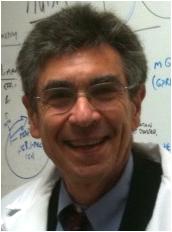Prof. Robert Lebkovitch and Prof. Brian Kobilka from the USA studied the G protein-coupled receptors, which are on the cell wall and are responsible for receiving it from the outside, such as the adrenaline hormone

The 2012 Nobel Prize in Chemistry was awarded jointly to Robert J. Lefkowitz of the Howard Hughes Medical Institute and Duke University School of Medicine in North Carolina, and Brian K. Kobilka of Stanford University School of Medicine in California. Scientists from the USA, for their research on G protein-coupled receptors.
G protein-coupled receptors are receptors that belong to a large family of transmembrane proteins (transmembrane proteins), which are stimulated by molecules outside the cell. The stimulus causes a chain of chemical reactions inside the cell that are activated by the receptor. Ultimately, the process causes a cellular response called a signal transduction pathway. G protein-coupled receptors are found exclusively in eukaryotic cells, which include yeast, plants and animals. The ligands that bind to the receptors and activate them can be light-sensitive compounds, odors, pheromones, hormones, neurotransmitters, etc. The ligands can be different in size - from very small molecules to large polypeptides. G protein-coupled receptors are the target of many modern drugs due to their involvement in many diseases.
Smart receptors on the cell wall
Our body is a finely tuned system of interactions between billions of cells. Each cell contains small receptors that allow it to sense its environment, so that it can adapt to new situations. Robert Levkovic and Brian Kovilka won the 2012 Nobel Prize in Chemistry for their groundbreaking discoveries that reveal the inner workings of an important family of such receptors - G-protein-coupled receptors.
For a long time, the mystery of how cells sense their surroundings still remained. The scientists knew that hormones such as adrenaline have a strong effect: they raise blood pressure and heart rate. Scientists suspected that the surface of the cell contained several types of hormone receptors, but what these receptors contained and how they might work remained a mystery for most of the 20th century.
Levkovic began using radioactivity in 1968 to track cell sensors. He linked isotopes of iodine to several hormones and thanks to the radiation he was able to reveal several receptors, among them the receptor for adrenaline: β-adrenergic receptor.
.
The team achieved the next step during the XNUMXs. The new researcher in the group, Kobilka took on the challenge of isolating the gene encoding the β-adrenergic receptor, from the vast human genome, he developed an approach that would allow him to achieve the goal. When the researchers analyzed the gene, they discovered that the receptor is very similar to the light-capturing receptor in the eye. They realized that it was a family of receptors that looked and functioned similarly.
Today this is a well-known family of receptors known as G protein-coupled receptors. About a thousand genes have already been coded for these receptors, for example the receptors that sense light, taste, smell, adrenaline, histamine, dopamine and serotonin. About half of the drugs achieve their effect through G protein-coupled receptors.
Levkovic and Kovilka's research is essential to understanding how the G protein-coupled receptors function. Moreover, in 2011, Kobilka achieved a new breakthrough: he and his team captured an image of the β-adrenergic receptor when it is activated by the hormone and sends signals into the cell. The image itself is a molecular masterpiece, the result of decades of research.

4 תגובות
4 Jewish Nobel Prize winners: Harush physics, Levkovitch chemistry, economics and medicine.
More the better. But any connection between this and the screw-ups regarding the drone is coincidental. That is, to conclude from the individual to the general, and from the diaspora to Israel is incorrect. Again - the Jewish people 0.2% of the world and 22% of the Nobel Prizes.
In the last paragraph it would have been very nice to put a link to the picture of the β-adrenergic receptor in question. Other than that, a very nice article.
Two typos
Third paragraph - hormones
Fourth paragraph - the atsumetz